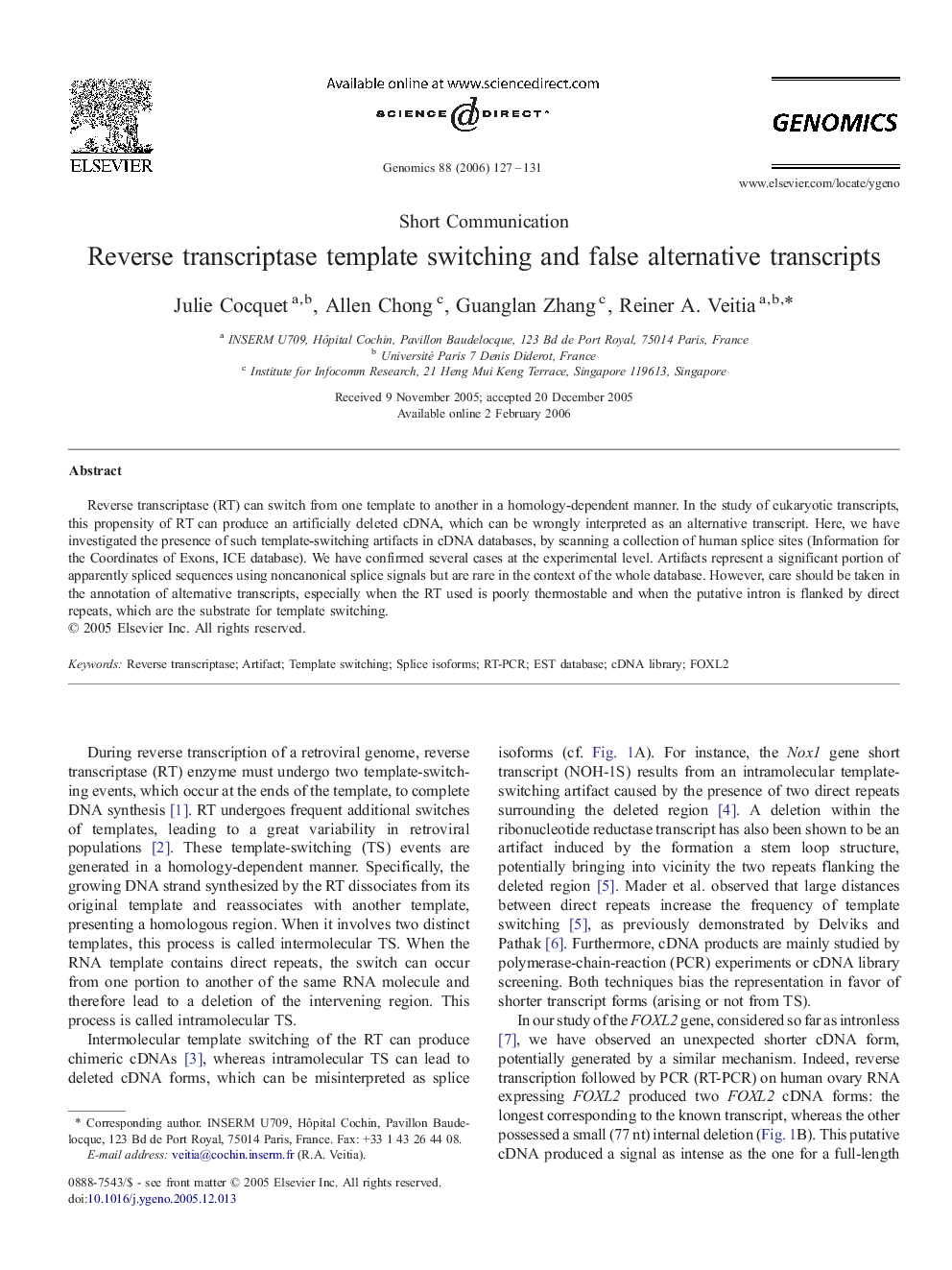| Article ID | Journal | Published Year | Pages | File Type |
|---|---|---|---|---|
| 2821428 | Genomics | 2006 | 5 Pages |
Reverse transcriptase (RT) can switch from one template to another in a homology-dependent manner. In the study of eukaryotic transcripts, this propensity of RT can produce an artificially deleted cDNA, which can be wrongly interpreted as an alternative transcript. Here, we have investigated the presence of such template-switching artifacts in cDNA databases, by scanning a collection of human splice sites (Information for the Coordinates of Exons, ICE database). We have confirmed several cases at the experimental level. Artifacts represent a significant portion of apparently spliced sequences using noncanonical splice signals but are rare in the context of the whole database. However, care should be taken in the annotation of alternative transcripts, especially when the RT used is poorly thermostable and when the putative intron is flanked by direct repeats, which are the substrate for template switching.
